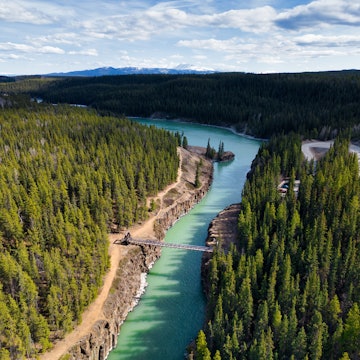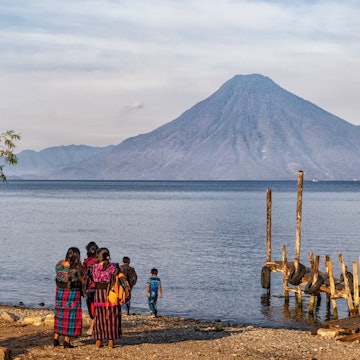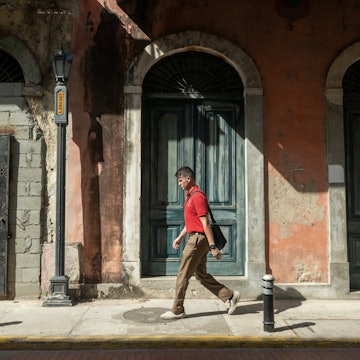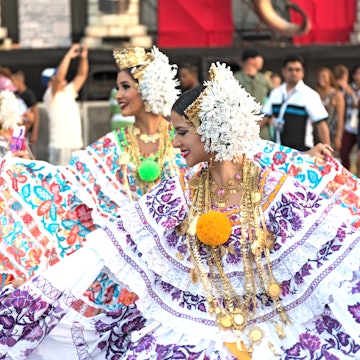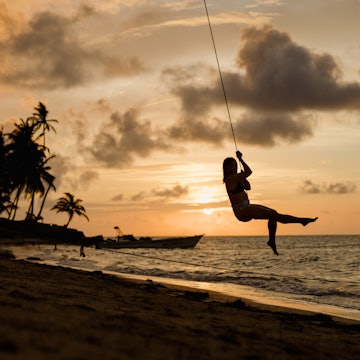
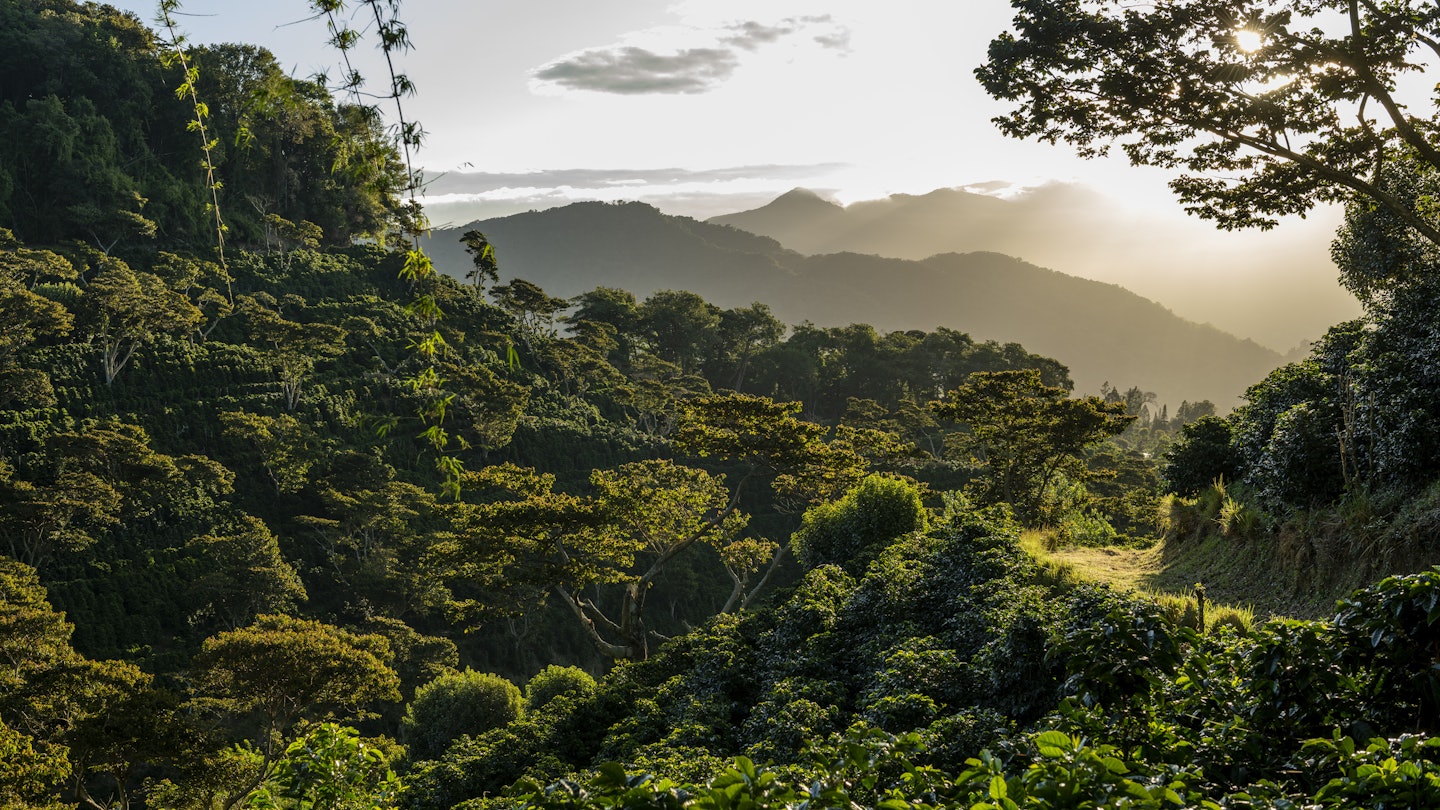
Plan your time in the coffee-growing province of Chiriquí, Panama, with these top tips © Cavan Images / Getty Images
Beautiful Chiriquí in Panama is all wildlife-rich cloud forests, fast-flowing rivers, verdant agricultural valleys and unspoilt mountainscapes.
Visitors flock to the postcard-pretty town of Boquete for its cool mountain air, outdoor adventures and the boundless hiking trails around Volcán Barú.
Here's what you need to know to plan a first-time visit to Chiriquí.
Ciriquí is one of the best regions to visit next year. See our full list of Best in Travel 2025 winners.
When should I go to Chiriquí, Panama?
Chiriquí is a year-round destination. From December to April, temperatures hover around 21°C/72°F, with February and March the warmest, sunniest months. The rainy season runs from May to December; October is the wettest month, but the rains usually come in short, sharp bursts in the afternoon.
Chiriquí’s coffee is harvested between December and March, and if you want to visit during Panama’s peak season (over Christmas, New Year’s and Easter) or enjoy the famous Feria de las Flores y del Café in Boquete for two weeks from mid-January – an extravaganza of flowers, coffee, and traditional music and dance – you’ll need to book well in advance.

How much time should I spend in Chiriquí?
You can get a taste of Chiriquí’s many charms on a long weekend – base yourself in Boquete to hike along a mist-covered cloud forest trail, sample Panama’s top-notch coffee and indulge in a farm-to-table feast.
Stay longer, and you could scale Panama’s highest peak – on foot or 4WD – or whoosh over it on adrenaline-inducing zip line, try your hand at white water rafting and rappelling, and hike the trails of its national parks before chilling out on a deserted island in the Golfo de Chiriquí, where you can spy humpback whales and dolphins.
Is it easy to get in and around Chiriquí?
Boquete is a seven-hour drive from Panama City, or you can reach David – Panama’s second-largest city and the capital of Chiriquí Province, an hour from Boquete – in around nine hours by bus or on an hour-long domestic flight.
Boquete’s center is compact and walkable and there are budget-friendly buses around the region. Taxis are plentiful but, if you’re going out of town, make sure to negotiate the fare in advance. To explore further afield and to reach trailheads, it’s worth hiring a car or taking tours.
6 of the best things to do in Chiriquí
1. Head to Boquete, Chiriquí’s chilled adventure capital
Set in the foothills of the mighty Volcán Barú, bucolic Boquete is famed for its cool climate, pristine nature and world-class coffee. It’s also Chiriquí’s outdoor adventure playground where adrenaline junkies will be spoilt for choice.
There are climbing routes for all levels; scramble up vertical volcanic rock walls, across horizontal basalt columns, and rappel down waterfalls. The fast-flowing Rio Chiriquí Viejo is perfect for white water rafting, with spectacular wildlife watching between navigating the rapids. Explore by mountain bike or horseback, then soak weary muscles in Caldera’s rustic, mineral-rich hot springs.
2. Go from bean to cup with a coffee tour and tasting
Chiriquí’s fertile volcanic soil is perfect for growing coffee and fincas stretch to the horizon in a rippling patchwork of green. The region’s particular claim-to-coffee-fame is Geisha Panama, one of the world’s most expensive cups of joe.
To see the coffee process in action – from planting and harvesting the ripe cherries to drying and roasting the beans, ending in a coffee cupping – take a tour of one of the many plantations around Boquete. Try the longstanding Finca Lérida and the Elida Estate, part of the Lamastus Family Estates, and Café Altieri Specialty Coffee, which runs a community development program for its indigenous Ngäbe-Buglé coffee pickers.

3. Hike up Panama’s highest peak, Volcán Barú
At 3474m (11,398ft), the top of dormant Volcán Barú is Panama’s highest point. On a clear day, there are stellar views over the Atlantic and Pacific coasts, and its 143-sq-km (55-sq-mile) namesake national park is teeming with wildlife, including pumas and more than 250 bird species.
It’s a steep and challenging 27km-hike (17 miles) – around six hours up, and another six back to Boquete – but tackle it overnight and you’ll get a show-stopping sunrise from the summit before heading back down. If hiking isn’t for you, there’s a bone-jangling 4WD ride up to the summit that sets off around 3am.
4. Fly over the forest canopy then go bird-watching
Make like a superhero and whizz over the forest canopy on Tree Trek Boquete’s thrilling zip line. Back on terra firma, hike along a magical cloud forest trail such as the 8km (4.3 miles) Sendero Los Quetzales between Boquete and Cerro Punta in search of the aptly named resplendent quetzal; on every birder’s bucket list, February to May are the best months for sightings.
5. Spot marine mammals on the Gulf of Chiriquí
The Golfo de Chiriquí stretches from the Costa Rican border to the Azuero Peninsula. It’s dotted with tiny tropical islands, dense mangrove forests and one of the Pacific’s largest coral reefs, home to monkeys, turtles, a host of birds, an array of rainbow-colored fish and around 20 species of marine mammal, all under the protection of the Parque Nacional Marino Golfo de Chiriquí.
Take a boat tour from Boca Chica – around 90 minutes from Boquete and an hour from David – for stunning humpback whale watching, as they breach and slap the water with their tails. The whales migrate from both poles to the gulf’s balmy waters between May and November, but July through October sees the greatest numbers. You can spot pilot whales, pods of dolphins, whale sharks and schools of giant manta rays, too.

6. Hike the Lost Waterfalls Trail
There are numerous epic hikes around Chiriquí’s lush landscapes, but the trail leading to three dazzling waterfalls near Boquete is one of the most popular. The out-and-back 3.4km (2.1 miles) trail is well-signposted but can be steep and slippery, surrounded by evergreen jungle, lofty trees, outsized foliage and twisting vines – look out for sloths, monkeys and elusive quetzals.
The first waterfall is the highest and endlessly photogenic, so some hikers leave it until last. There’s more climbing to reach the second waterfall, a powerful cascade that tumbles off a cliff edge into a small, rock-strewn pool. Waterfall three is the most difficult to reach but arguably the most stunning, and there are ropes to help you up.
My favorite thing to do in Chiriquí
After a hard day’s hiking, I love tucking into Chiriquí’s farm-to-table fare. In Boquete, the restaurant at Finca Lérida is worth the splurge. Chef Sara Borrero uses organic produce from nearby farms to create Panamanian flavours with a contemporary twist, such as smoked tomato soup and trout in a cashew and orange sauce. And don’t miss a shot of the Geisha liquor.
At Restaurante Cerro Brujo in Volcán, chef Patricia Miranda’s daily-changing chalkboard menu focuses on organic local ingredients, perhaps delicious salads just plucked from the garden, mahi-mahi coated in sesame seeds and tree tomato sorbet.
How much money do I need for Chiriquí?
Chiriquí is generally more wallet-friendly than Panama City. There’s accommodation to suit all budgets, from hostels to family-run guesthouses and luxe boutique hotels. Buses are cheap and car hire can be, too, and you can fill up on street food, eat in a fonda (local restaurant), or splash out on fine dining. Here's a guide to daily budgets:
Basic hotel room for two: from around US$40
Car rental per day: from around US$6
Cup of coffee: from around US$3 for regular coffee to US$100 for Geisha
A local beer: around US$2
Dinner for two in a mid-range restaurant: around US$40
Bus ticket: around US$2
What do I pack?
Bring layers, no matter the season. When Panama’s coast and cities sizzle, Chiriquí is cool and fresh so dress in layers. Shorts are fine for the day but for chilly highland evenings you’ll need long pants and a light fleece. And bring sturdy, waterproof boots and a rain jacket for wet and muddy trails.








